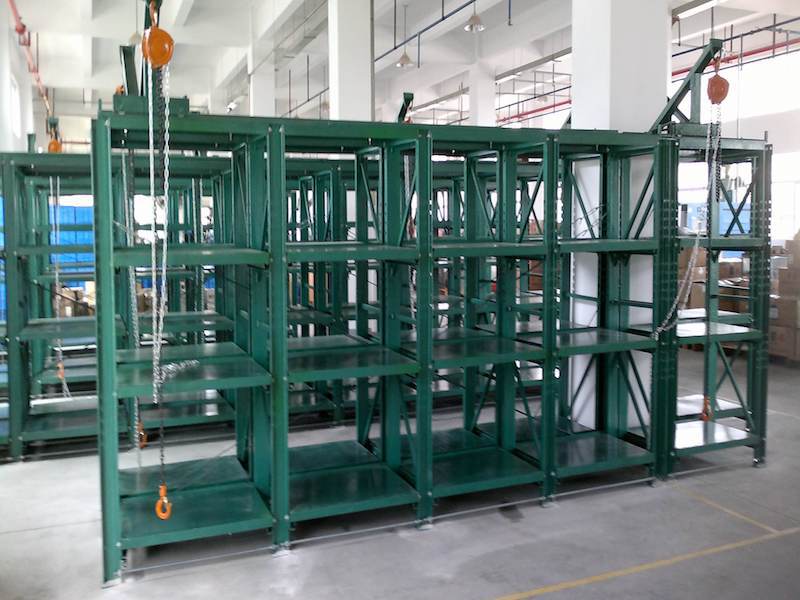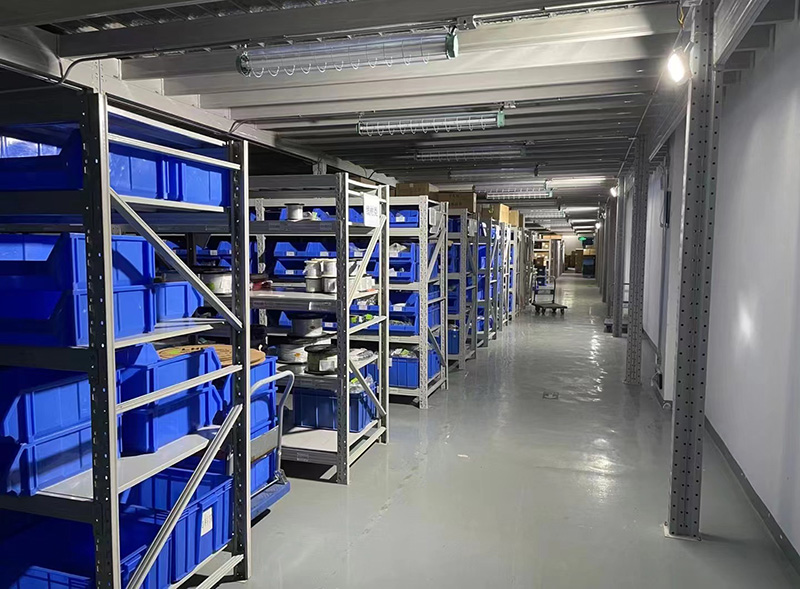In the fast-paced world of logistics and warehousing, efficient storage solutions are paramount for optimizing space, improving inventory management, and reducing operational costs. One stop pallet racking has emerged as a versatile and popular choice for businesses seeking a comprehensive approach to warehouse storage. This system is designed to handle a wide range of palletized goods, offering durability, flexibility, and scalability. As companies strive to enhance their supply chain efficiency, understanding the ins and outs of one stop pallet racking can be a game-changer. In this article, we will delve into five key aspects of one stop pallet racking, providing you with a thorough guide that covers its definition, benefits, selection criteria, installation processes, and cost considerations. By the end, you'll have a clear roadmap for implementing this system in your facility, along with answers to common questions in our FAQ section.

One stop pallet racking is a type of storage system that integrates various components to provide a complete solution for warehouse needs. Unlike traditional racking systems that might require multiple suppliers for different parts, one stop pallet racking offers a unified approach, including design, supply, installation, and maintenance services from a single provider. This system typically consists of upright frames, beams, and pallet supports that can be configured to suit different warehouse layouts and load requirements. It is commonly used in industries such as retail, manufacturing, and distribution centers, where efficient space utilization and quick access to inventory are critical.
The concept behind one stop pallet racking is to simplify the process for businesses by offering a turnkey solution. This means that from initial consultation to final implementation, everything is handled under one roof, reducing the complexity and time involved in setting up a storage system. The design often allows for easy adjustments and expansions, making it ideal for growing businesses. Key features include high load-bearing capacity, compatibility with various pallet sizes, and adherence to safety standards. By opting for one stop pallet racking, companies can ensure a seamless integration into their existing operations, minimizing downtime and maximizing productivity. This approach not only streamlines the procurement process but also enhances overall warehouse efficiency, making it a preferred choice in the international Storage equipment field.
One stop pallet racking offers numerous advantages that make it a standout option in the storage facilities industry. First and foremost, it provides exceptional space optimization. By utilizing vertical storage space, this system allows warehouses to store more goods without expanding their footprint, which is crucial in urban areas where real estate costs are high. The design of one stop pallet racking enables easy access to pallets, facilitating first-in, first-out (FIFO) or last-in, first-out (LIFO) inventory management methods, depending on the configuration. This improves inventory turnover and reduces the risk of stock obsolescence.
Another significant benefit is the cost-effectiveness of one stop pallet racking. Since it encompasses all aspects of the storage solution—from design to maintenance—businesses can often negotiate better pricing and avoid hidden costs associated with multiple vendors. Additionally, the durability and longevity of these systems mean lower replacement and repair expenses over time. Safety is also a major advantage; one stop pallet racking is engineered to meet international safety standards, reducing the likelihood of accidents such as collapses or falls. This not only protects employees but also minimizes liability issues.
Flexibility and scalability are further perks of one stop pallet racking. As business needs evolve, the system can be easily reconfigured or expanded without a complete overhaul. This adaptability is particularly valuable in dynamic industries where inventory levels fluctuate seasonally. Moreover, the integration of one stop pallet racking with other warehouse technologies, such as automated retrieval systems, enhances overall operational efficiency. By investing in one stop pallet racking, companies can achieve a higher return on investment through improved productivity, reduced waste, and enhanced organizational capabilities. This makes it an ideal solution for businesses looking to stay competitive in the global market.
Choosing the appropriate one stop pallet racking system requires careful consideration of several factors to ensure it aligns with your warehouse's specific needs. Start by assessing your inventory characteristics, including the size, weight, and type of palletized goods. One stop pallet racking is designed to handle various load capacities, so it's essential to determine the maximum weight per pallet to avoid overloading. Additionally, consider the dimensions of your pallets and the overall warehouse layout. Measuring the available space, including ceiling height and aisle widths, will help in selecting a configuration that maximizes storage density while allowing for efficient material handling equipment movement.
Next, evaluate the material and construction quality of the one stop pallet racking system. Look for systems made from high-strength steel, which offers durability and resistance to wear and tear. It's also important to check for compliance with international standards, such as those from the Occupational Safety and Health Administration (OSHA) or the European Committee for Standardization (CEN). Another key aspect is the level of customization offered by the provider. Since one stop pallet racking aims to be a comprehensive solution, ensure that the supplier can tailor the system to your unique requirements, such as incorporating special features for hazardous materials or integrating with existing automation.
Consider the supplier's reputation and after-sales support when selecting a one stop pallet racking system. A reliable provider should offer services like site assessment, installation, and ongoing maintenance. Reading customer reviews and requesting case studies can give you insights into their track record. Lastly, think about future scalability. Opt for a one stop pallet racking system that can be easily modified or expanded as your business grows. By taking these factors into account, you can make an informed decision that enhances your warehouse's efficiency and supports long-term success. This thorough selection process ensures that your investment in one stop pallet racking pays off in terms of performance and reliability.

Proper installation and maintenance are crucial for the optimal performance and safety of any one stop pallet racking system. The installation process typically begins with a detailed site survey conducted by the provider to assess the warehouse environment. This includes checking the floor condition, ensuring it is level and capable of supporting the racking loads. Once the design is finalized, the actual installation involves assembling the upright frames, beams, and other components according to the manufacturer's specifications. It's highly recommended to hire professional installers who are experienced with one stop pallet racking to avoid common pitfalls like misalignment or insufficient anchoring, which could lead to structural failures.
During installation, safety protocols must be strictly followed. This includes using appropriate personal protective equipment (PPE) and ensuring that the area is clear of unauthorized personnel. Regular inspections should be conducted throughout the installation to verify that all connections are secure and that the system meets the planned design. After installation, a load test is often performed to confirm that the one stop pallet racking can handle the intended weights safely. This step is vital for preventing accidents and ensuring compliance with regulatory standards.
Maintenance of one stop pallet racking is equally important to extend its lifespan and maintain safety. Establish a routine inspection schedule to check for signs of damage, such as bent beams, loose bolts, or corrosion. Any issues should be addressed promptly to prevent minor problems from escalating into major hazards. Cleaning the racking regularly can also prevent the accumulation of dust and debris, which might compromise structural integrity. Additionally, consider implementing a training program for warehouse staff on proper usage and safety practices related to one stop pallet racking. This includes guidelines on loading and unloading pallets to avoid overloading or impacts. By prioritizing installation and maintenance, businesses can ensure that their one stop pallet racking system remains reliable and efficient, contributing to a safer and more productive workplace.
Understanding the cost and pricing structure of one stop pallet racking is essential for budgeting and achieving a favorable return on investment. The total cost typically includes several components: the initial purchase price, installation fees, and ongoing maintenance expenses. The price of the one stop pallet racking system itself can vary based on factors such as material quality, design complexity, and customization requirements. For instance, systems made from high-grade steel or those with specialized features for heavy-duty applications may command a higher price. On average, businesses can expect to spend between $50 and $200 per linear foot for a standard one stop pallet racking system, but this can increase for advanced configurations.
Installation costs are another significant factor, often ranging from 20% to 40% of the total equipment cost. This covers labor, equipment rental, and any necessary site modifications. By opting for a one stop pallet racking provider that offers integrated services, companies might save on these costs through bundled packages. Additionally, consider long-term expenses such as maintenance and potential upgrades. Regular maintenance contracts can cost around 5-10% of the initial investment annually, but they help prevent costly repairs and downtime.
To make one stop pallet racking more affordable, explore financing options or bulk purchase discounts. Many suppliers offer flexible payment plans or leasing arrangements, which can ease the financial burden. It's also wise to conduct a cost-benefit analysis comparing one stop pallet racking with alternative systems. For example, while the upfront cost might be higher than basic shelving, the space savings and efficiency gains often result in lower operational costs over time. Factors like improved inventory turnover, reduced labor costs, and enhanced safety can lead to significant savings. By carefully analyzing these aspects, businesses can justify the investment in one stop pallet racking and ensure it aligns with their financial goals. This comprehensive cost approach ensures that you get the best value from your one stop pallet racking system in the competitive .
Q1: What is the typical lifespan of a one stop pallet racking system?
A1: The lifespan of a one stop pallet racking system can vary depending on usage, maintenance, and environmental factors, but with proper care, it typically lasts 15 to 20 years. Regular inspections and timely repairs can extend this duration.
Q2: Can one stop pallet racking be customized for irregularly shaped warehouses?
A2: Yes, one stop pallet racking is highly customizable and can be designed to fit irregular warehouse layouts, including those with obstacles or non-standard dimensions. Providers often offer tailored solutions to maximize space utilization.
Q3: How does one stop pallet racking compare to other types of racking systems in terms of cost?
A3: One stop pallet racking may have a higher initial cost compared to basic systems like selective racking, but it often proves more cost-effective in the long run due to its comprehensive services, durability, and efficiency gains.
Q4: What safety standards should I look for when purchasing one stop pallet racking?
A4: When selecting one stop pallet racking, ensure it complies with international standards such as OSHA guidelines in the U.S., EN standards in Europe, or similar regulations in your region. This includes load capacity ratings and structural integrity checks.
Q5: Is it possible to relocate or expand a one stop pallet racking system after installation?
A5: Absolutely, one stop pallet racking is designed for flexibility and can be disassembled, relocated, or expanded with relative ease. However, it's best to consult with the provider to ensure proper reassembly and safety compliance.
 Wechat
Wechat
 Whatsapp
Whatsapp